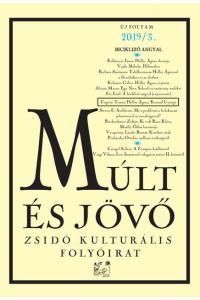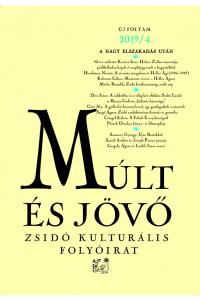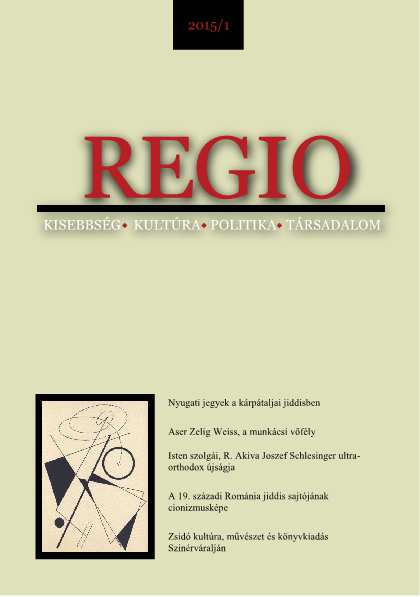
Képeken át a zsidók világa
Körner András: Hogyan éltek? A magyar zsidók hétköznapi élete 1867–1940. Budapest, Corvina Kiadó, 2013. 232 oldal
More...We kindly inform you that, as long as the subject affiliation of our 300.000+ articles is in progress, you might get unsufficient or no results on your third level or second level search. In this case, please broaden your search criteria.

Körner András: Hogyan éltek? A magyar zsidók hétköznapi élete 1867–1940. Budapest, Corvina Kiadó, 2013. 232 oldal
More...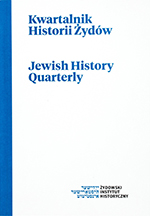
Paweł Fijałkowski – Magdalena Bendowska, Jan Doktór, Amsterdam polskich Żydów. Stare druki hebrajskie ze zbiorów Żydowskiego Instytutu Historycznego; Hanna Kozińska-Witt – Maria Gotzen-Dold, Mojżesz Schorr und Majer Bałaban. Polnisch-jüdische Historiker der Zwischenkriegszeit; Piotr Kendziorek – Georges Didi-Hubermann, Kora
More...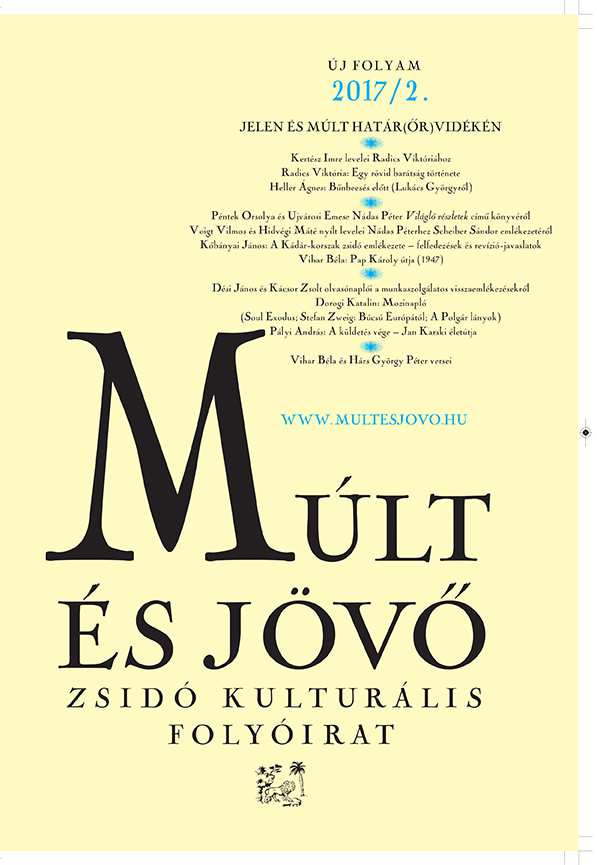
In this article the author offers a short review of the history of education of Jewish youth in Bosnia and Herzegovina. At the beginning of the 20th century the existence of only one Jewish school is recorded in the country. Jewish Intermediate Theological Institute founded in the year 1928, was preceded by the establishment of a four year preparatory course directed by Sarajevo Grand rabbi Moric Levi. The Second World War interrupted the religious education of Jewish children all together. Primary school – meldar was abolished and so was the religious education in gymnasiums. Most of the professors and students of the Jewish Theological Seminary were victims of concentration camps, amongst them Dr. Moric Levi who was a director of this seminary and the religious studies’ teacher in Classical Gymnasium in Sarajevo. Today, after 75 years of no religious education, Bosnia and Herzegovina is the only country in the region that has introduced religious education and the Jewish community now has a task to produce the textbooks for religious studies subject for primary school.
More...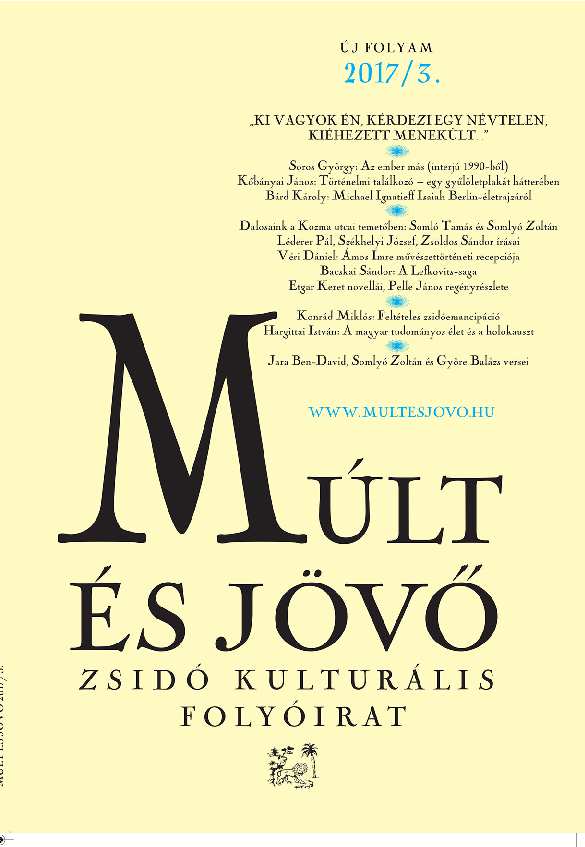
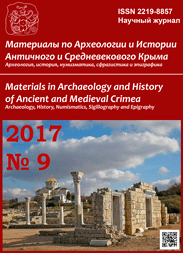
The objects of study are artifacts from the Karaite collection, which is kept in the funds of the State Budgetary Institution of the Republic of Crimea the Central Museum of Taurida. The history of its formation is also studied. The collection includes a large number of exhibits directly related to the history of the Karaites of the Crimea. Among the items of this collection are especially interesting manuscripts, elements of decoration of the Karaite kenases, religious objects, jewelry and household products, as well as rare photographs and documents. Materials stored in other museum depositories in the Republic of Crimea were also taken into account. The ethnographic and historical and cultural value of the Karaite collection’s items has been demonstrated. Unfortunately, some of the artifacts previously listed in the collection were lost due to the anti-religious policy of the Soviet state as well as during the Great Patriotic War.
More...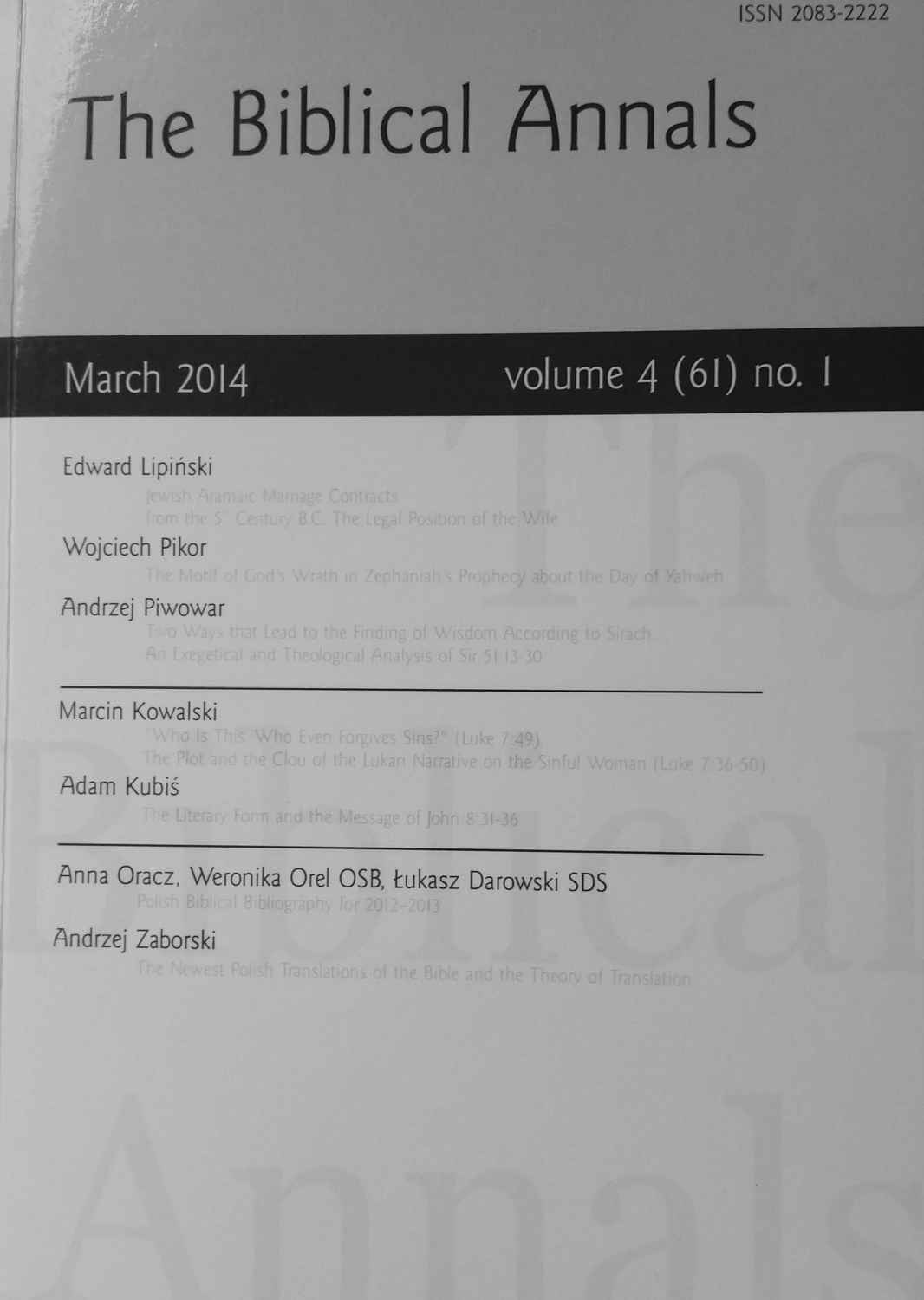
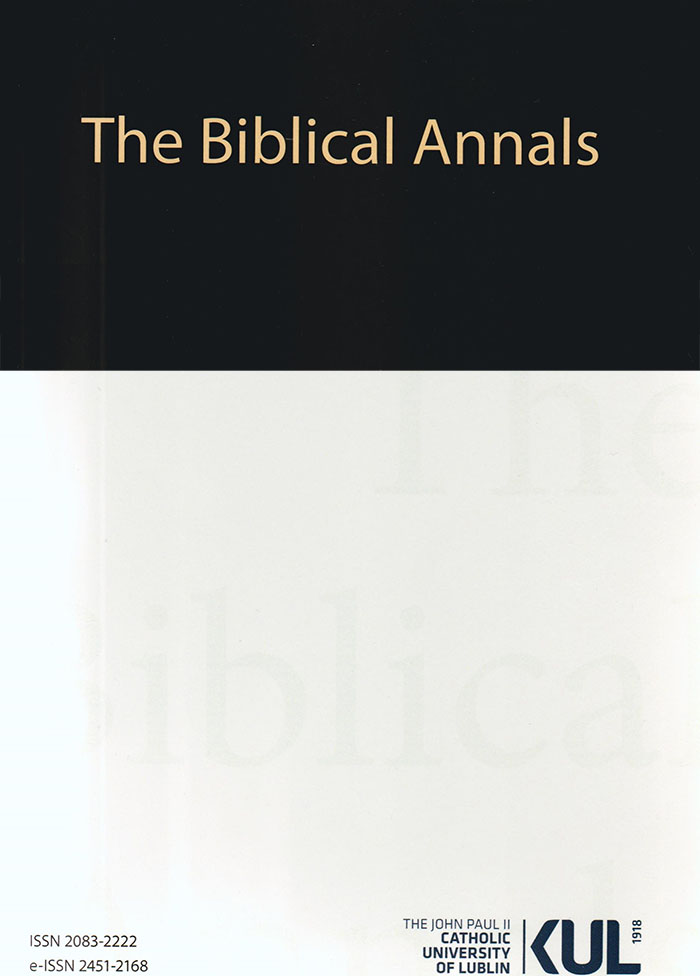
The negative phrase: “the brood of vipers” has no equivalent in the OT, neither it is present in the extra-biblical writings. The first evangelist is the one who uses the epithet most often. However, Luke does use it as well (Lk 3:7). The paper is a study of narrative strategies of both Gospel-writers within the context of the OT and the rabbinic literature in order to identify one of the important narrative threads of the third Gospel. Instead of stigmatizing the particular faction of the Israel’s religious society, Luke employs the primordial Christian tradition to stress sinfulness of human nature, which in the past resulted in rejecting the good news of Jesus.
More...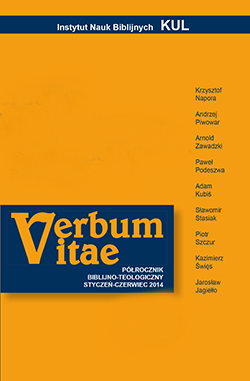
The article starts with the question: Can God be angry with man? In attempting to explore the issue of God’s wrath. The problem of knowing God is taken as the point of departure. The existential “otherness” between God and man is one reason why God’s emotionality, including anger, cannot be discussed in isolation but only by analogy to man’s anger. Therefore, the explication of God’s “wrath” demands first of all asynthetic presentation of man’s anger, including its origins, types and functions. In the second half of the article, the author presents the notion of God’s wrath in a metaphorical sense, shedding some light upon its object and purpose. He explains the nature of God’s wrath toward pagans, who relied on human wisdom, and then toward Jews, who placed their trust in the value of the Law of Moses. The wrath of Christ is shown within the framework of the mystery of incarnation, the reality of the humanity of Christ, and His attitude toward certain categories of people. In its conclusion, the article first presents the way of “mitigating” God’s wrath, according to Aquinus, through the satisfaction for the sins of humanity performed by Christ in His passion and the sacrifice of the cross, and then compares this interpretation of overcoming God’s “wrath” with the viewpoints of other theologians.
More...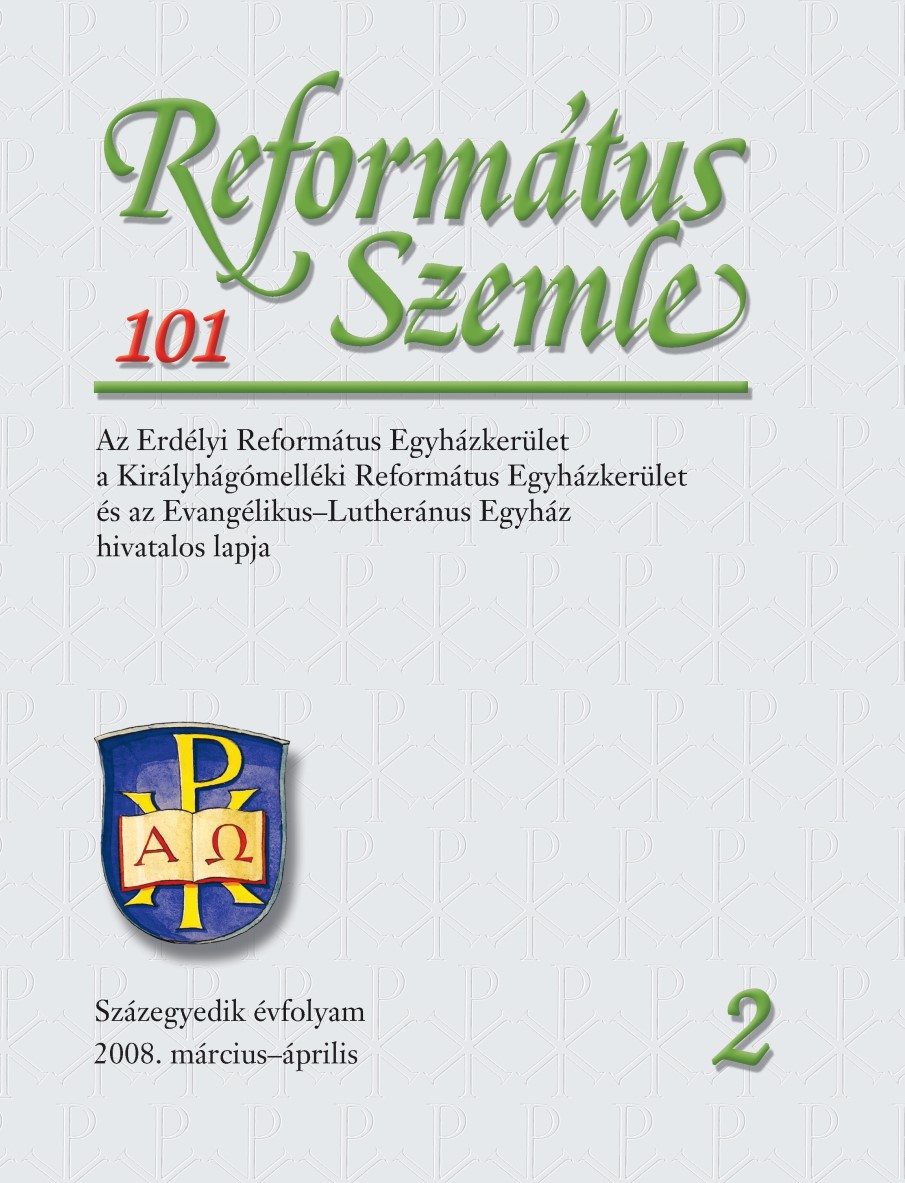
Die hier dargebotene Übersetzung bietet – als Probe-Text des ungarischen Mischna-Projektes koordiniert von Tibor Marjovszky – die ersten drei Kapitel des Mischna-Traktats Nazir.
More...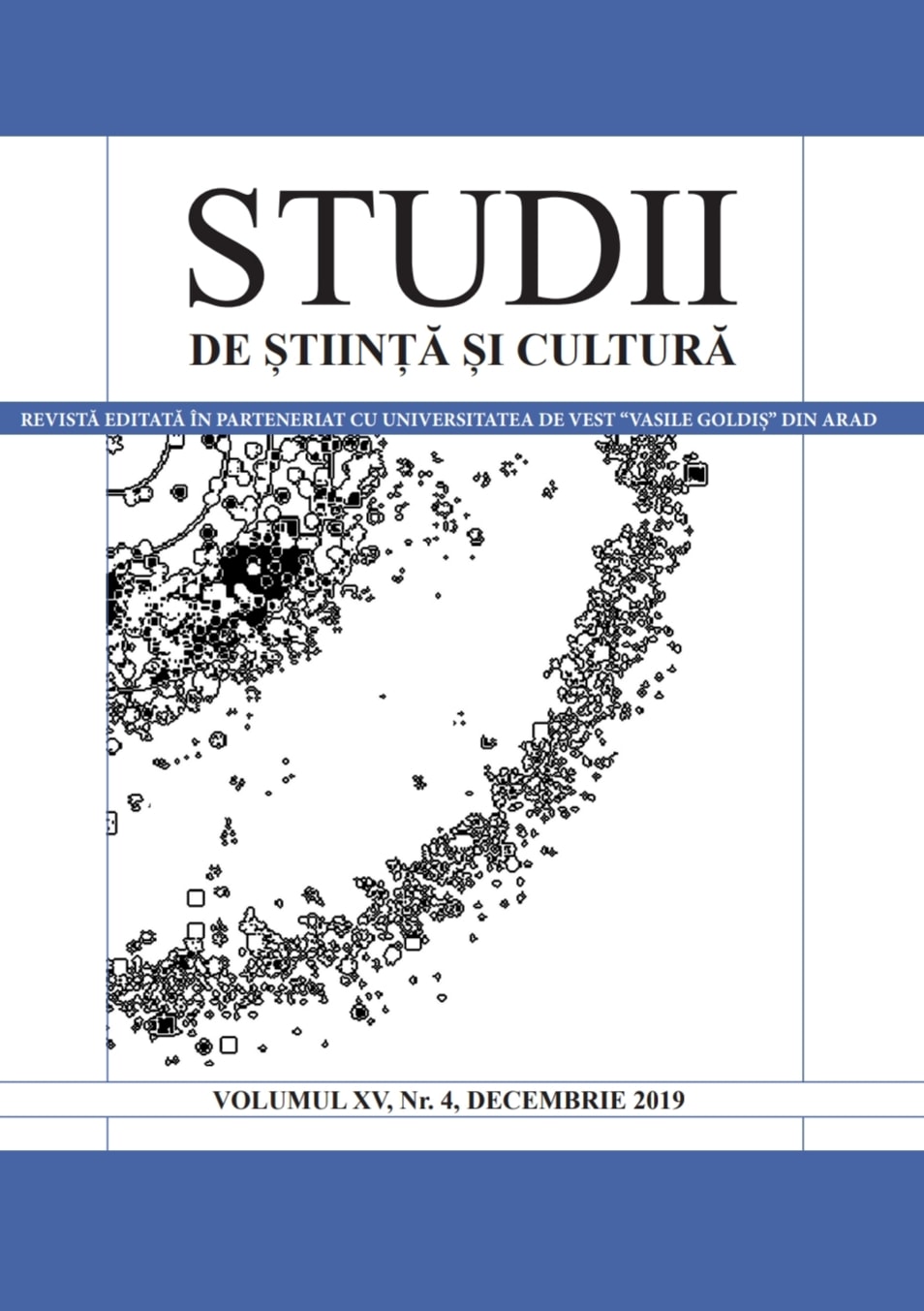
During the Antonescu regime, by order 4147 of the Ministry of Internal Affairs, it was established that all the Jews between Siret and Prut should be evacuated to the county residence cities. The number of those evacuated was on July 31, 1941, of 40,000 people. By July 31, 1941, over 40,000 Jews were evacuated. Evacuated families are no longer allowed to enter the communes from which they left, which created major problems in the care and provision of food for the evacuees, by the Jewish communities in the cities of residence. On July 11, 1941, 670 Jews were evacuated from the villages of the county, being unable to supply themselves with the strictly necessary food.
More...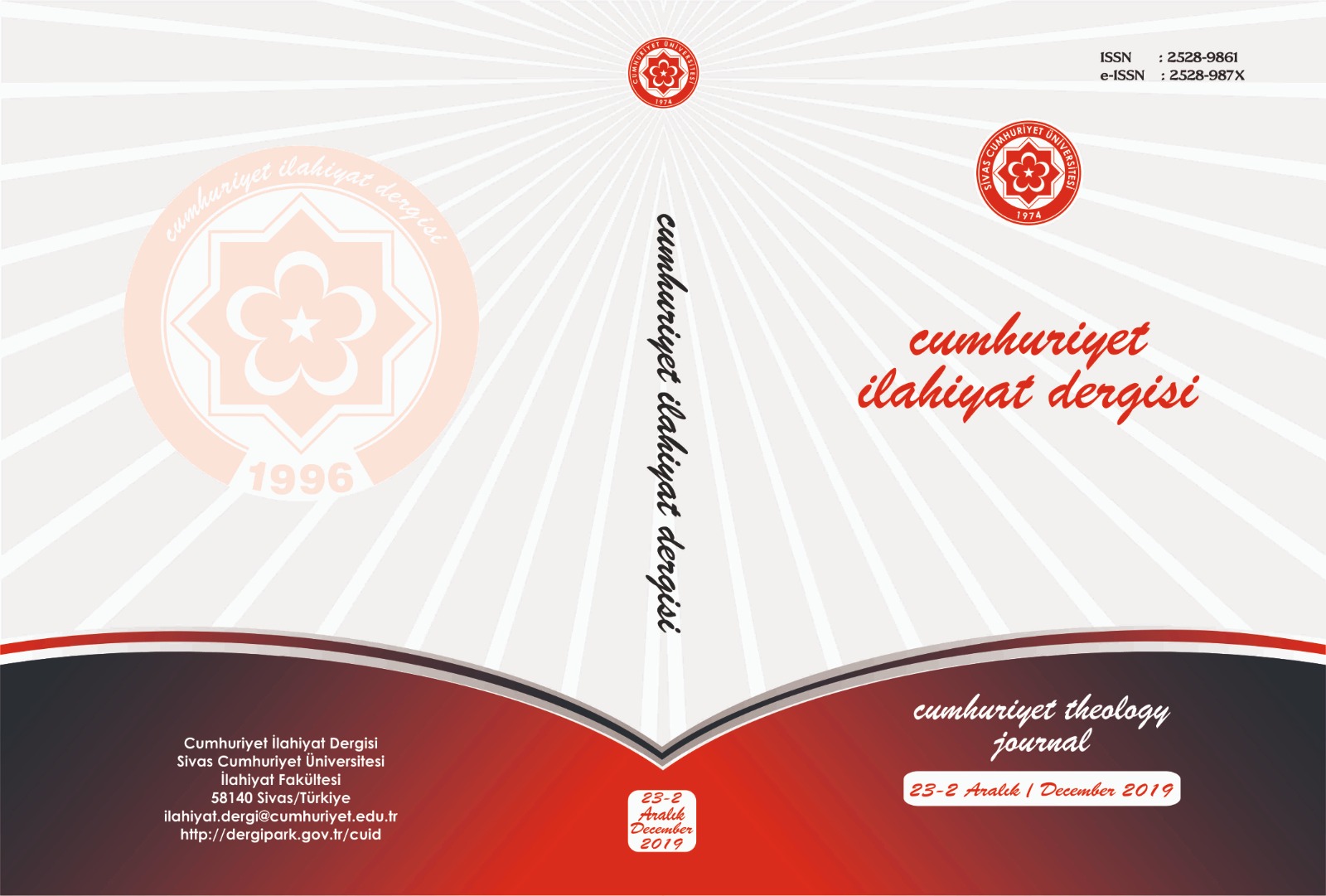
In Islamic thought, the accumulation regarding Tafsir appears in various ways. One of them is the type of work called Anmudhaj that contains chapters about Tafsīr. In the Anmudhaj type of works, the determination of the sciences to investigate may occur according to different criteria. These criteria may occur as a classification of science and they also can be limited to a few sciences. In this article, we will examine the Tafsīr chapter from the work of Sipāhīzādah who took charge as a teacher and judge in the Ottoman Empire. That part constitutes the first chapter of the work called Anmūdhaju’l-Funūn which he symbolically limited the investigated sciences to seven. The other investigated sciences in the work are Ḥadīth, Kalām, the methodology of Islamic Law, Fiqh, Bayân, and Medical Science. In the Tafsīr chapter of the work of Sipāhīzādah called Anmūdhaju’l-Funūn, seven different issues are investigated in total. Those questions are “Does Bismillah count as a vow?” and “What is the order of the creation of the earth and the heavens in the light of the verse al-Baqarah 2/29?” and “Do the names of the numbers imply limitation (hasr)?” and “What is the reason behind the borrowing of Israelites the jewels of the Egyptians in the light of the verse al-Baqarah 2/50?” and “The entry order to the city was given to Israelites in the verses al-Baqara 2/58-59, was this order given to them before or after their deviation?” and “Where is the prostrated door which is mentioned in the verse?” and “How can we assess Fakhr al-Dīn al-Rāzī’s questions and answers regarding the narrative differences between the verses al-Baqarah (2/58-59) and al-A‘râf (7/161-162)?” Sipāhīzādah examined the issues of Tafsīr through a historical which makes him the participant of the debate and allows him to the continue the present discourse through a critical reading. This makes the subject of work quite important. Because thanks to the work, it will be possible to catch some clues about the progress of the accumulation regarding Tafsīr in the era the author lived.
More...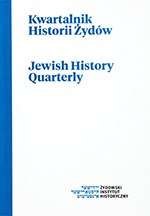
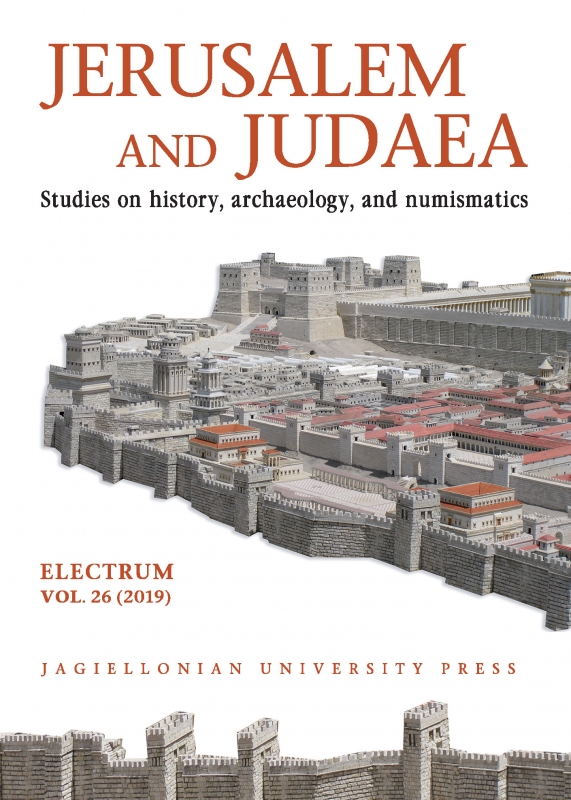
Alongside a critique of a new analysis of Josephus’ long account of Antiochus VII Sidetes’ siege of Jerusalem in his Antiquities, this paper presents new archaeological support for the conclusion that, at the time of the siege, the “First Wall” enclosed the Southwestern Hill of the city. Further examination of the stratigraphic summaries of the Hellenistic fortification system at the Giv‘ati Parking Lot proposes that the system constituted part of the western city-wall for the City of David hill. The addition of a lower glacis to the wall was made in advance of Sidetes’ siege. In other words, in addition to the “First Wall” protecting the western side of an expanded Jerusalem, John Hyrcanus also reinforced the City of David’s wall, as an additional barrier to the Seleucid forces. Later, after the high priest’s capitulation to Sidetes (132 BC) and the king’s death in Media (129 BC), Hyrcanus again reinforced the same fortification with an upper glacis, which never was tested.
More...
Despite Josephus’ detailed description of Herod’s palace built on the Southwestern Hill of Jerusalem in Bellum Judaicum, book 5, only scant archaeological remains from its substructure were revealed so far, and only few scholars have attempted reconstructing its plan and decoration. A group of monumental Ionic columns, alongside a sculpted head of a lion, found in the Southwestern Hill in the vicinity of the supposed location of the palace, seems to have originated from the palace complex, attesting to its grandeur and unique character. Combining this evidence with Josephus’ description and our vast knowledge of Herod’s palatial architecture, based on excavated palace remains in other sites, such as Jericho, Herodium, Masada, Caesarea Maritima and Machaerus, allows us to present a clearer picture of the main palace of this great builder.
More...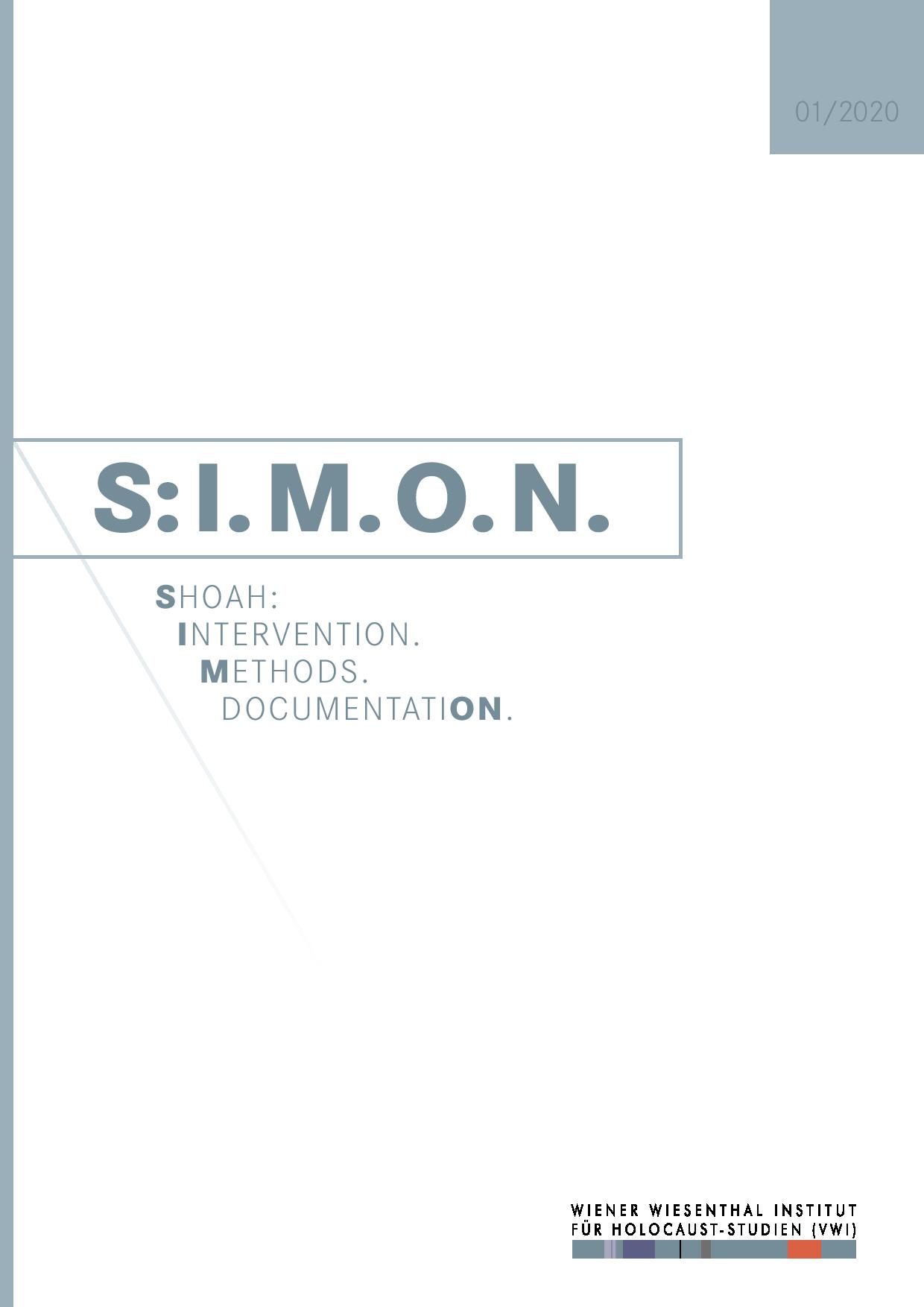
In November 1997, Simon Wiesenthal gave an interview to the historian Albert Lichtblau. For five days, he talked tirelessly about his life, his work, his fate. The 11-hour interview became part of the USC Shoah Foundation’s testimonies collection on the Holocaust. In January/February 2020, the VWI presented this unique contemporary source document in the Austrian Film Museum on six consecutive Sunday afternoons – each time to a full house. After each screening, experts and contemporaries of Wiesenthal were invited by the VWI to comment on what they had seen, deepening the narrative in a moderated discussion and contributing their own experiences and memories, both academic and anecdotal.
More...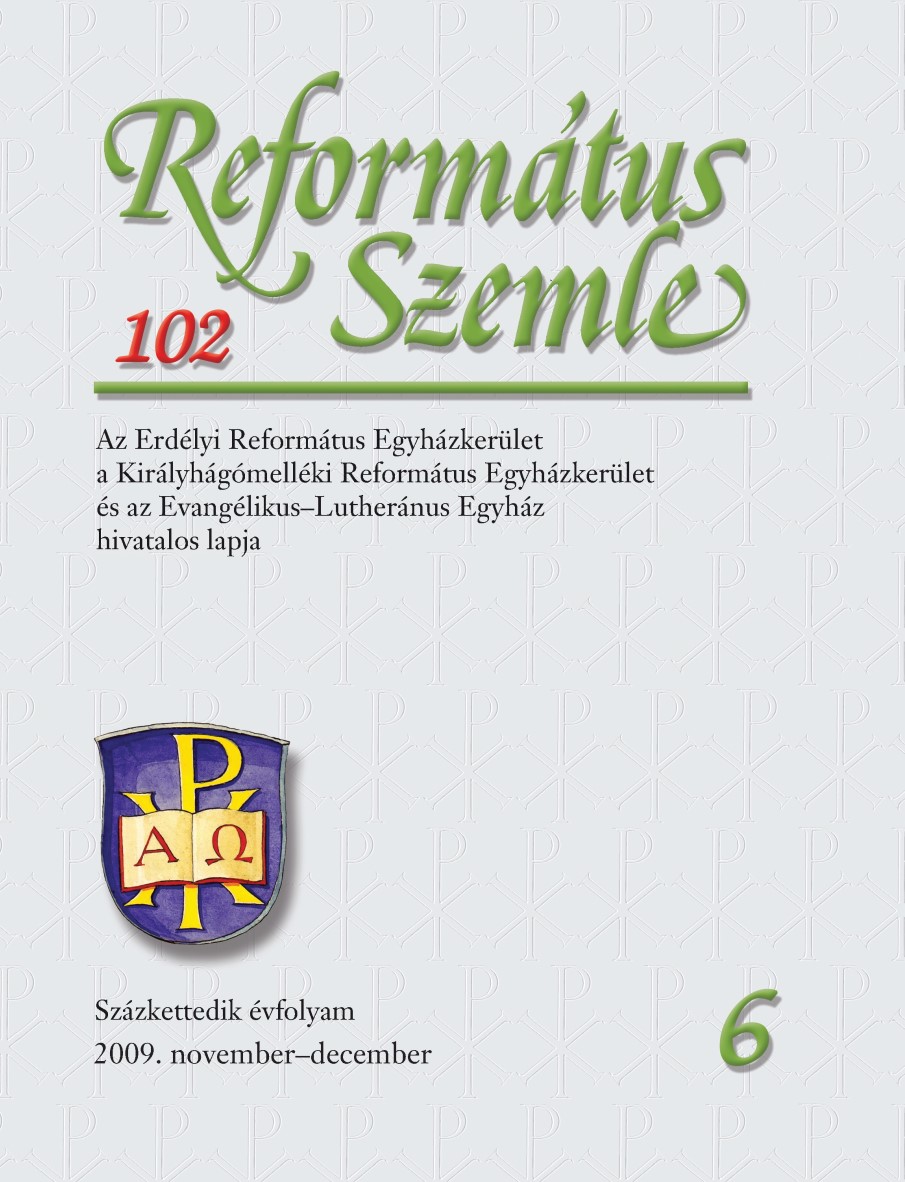
The Tractate Gittin, as its name implies, is concerned mainly with problems of the document known as Get (plural Gittin). The name was applied to two kinds of document – the (get pitturin), the writ of divorce, given by a husband to his wife, and the (getshihrur), given by a master to his slave. When used without further qualification, the word refers to the former of these. It is this document that the tractate Gittin principally deals with. To avoid misunderstanding, however, the fact must be emphasised that the main theme of Gittin is not divorce, but the validity of the (get). The translation is based on the following text: Seder Nasim. In: Shisha sidre Mishnahim perushe rabenu Ovadiya mi-Bartenura ve-im kitsur perush tosafot Yom Tov. Hocaat Horev,Jerusalajim 1994, pp. 715–747.
More...